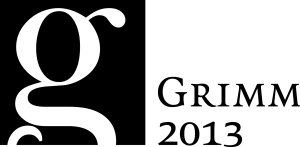Lantern walk
Half an hour after local sunset time, the audience begins the one-hour hike into the darkness of the forest. What is hidden there? A world that has survived in people's stories for centuries, for millennia? An ancient prehistoric time as Jacob Grimm attributed to fairy tales? Visitors are led into the forest in small groups at fifteen-minute intervals. Only lanterns are used to light the way, and each spectator is given one. They are immediately immersed in the atmosphere of the forest, in the darkness, in the silence, until they stand in front of the first gate of light that grants them access to another world. At six stations in the forest, the visitor encounters figures that seem to have sprung directly from the myths and legends of ancient folklore. A warrior warns of the giants and at a well in the forest floor a woman conjures up visions of the course of the world.
It was time to record these fairy tales, as those who are supposed to preserve them are becoming increasingly rare...
Wrote the Brothers Grimm in the preface to their collection of fairy tales. If you listen to the Grimm fairy tales, you can hear the voices of an ancient, almost forgotten world. It is a world in which trees and forests were sacred and the farmer left some of the grain in the field in gratitude. Jacob Grimm writes in his German Mythology (p.149):
The mildness of antiquity shines from such customs. Man does not want to appropriate everything that has grown for him, he gratefully leaves a part for the gods... Greed increased when the sacrifices ceased.
The pre-Christian, nature-religious ideas integrate man into the great web of the living world. The Grimm fairy tale of the toad tells us that this connection is existential in nature. A girl feeds a toad and it brings her a crown. But when the mother kills the toad, the girl also dies. This fairy tale, often referred to as the "Urmärchen", is part of a tradition of many stories, most of which are much older than the Grimm fairy tales themselves. In "Wald und Feldkulte" (Forest and Field Cults), Wilhelm Mannhardt tells of a woodcutter who cuts down the tree of a nymph despite repeated warnings. The nymph punishes him with insatiable hunger. In the production Schattenwald, the woodcutter bears the Germanic name "Walah - der in der Welt fremd Gewordene.
Terms and Figures of Germanic Mythology
The two ravens Hugin ("thought") and Munin ("memory") have to fly over the earth every day. I fear that Hugin will not return home; I worry even more about Munin.
The Edda, The Song of Grimnir (verse 20)
Yggdrasil - the ash tree, which as a world tree embodies the entire cosmos.
The Norns - the fateful women who "spin" at the roots of Yggdrasil at the Urd well. They guide the destinies of the people and the gods.
Ragnarok - the twilight of the gods; ragna "god", rök "cause, sense of origin". Ragnarök describes the end of the world and the emergence of a new world.
Ymir - from his flesh was born the earth, from his bones the rocks, from his blood the sea, from his hair the forests, from his brain the clouds and from his skull the firmament supported by four dwarfs.
GRIMM
The first edition of the Grimm's Kinder und Hausmärchen was published 200 years ago. Theater Anu from Berlin offers an unusual production to mark the anniversary and sends its visitors to one of the central places of the fairy tales: the forest at night. What is hidden there? A world that has survived in people's stories for centuries, millennia? Can we learn in fairy tales about an ancient, prehistoric time, as Jacob Grimm attributed to them? But above all: Is there still something meaningful for us to discover in these stories today - 200 years after the most famous collection of fairy tales was published? Follow Theater Anu into the forest...
With a view to several anniversaries, an extensive programme of cultural events on the life and work of Jacob and Wilhelm Grimm, as well as their "painter brother" Ludwig Emil, has been developed under the title "GRIMM.2013". The focus of the programme is in 2013, the official start of the Grimm anniversary is already in 2012.
GRIMM.2013 is a cooperation project of the State of Hesse, Kultursommer Nordhessen e.V. the City of Kassel, the districts of North Hesse, the GrimmHeimat NordHessen and the Deutsche Märchenstraße e.V. (German Fairy Tale Route).



